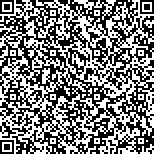| 引用本文: | 刘丹丹,印晓红,黄婷,丁楠,王玉田,王芳芳,吴萍,姚建标*.银杏叶及其提取物中33种禁用农药残留检测分析及风险评估[J].中国现代应用药学,2024,41(4):476-488. |
| LIU Dandan,YIN Xiaohong,HUANG Ting,DING Nan,WANG Yutian,WANG Fangfang,WU Ping,YAO Jianbiao*.Determination and Risk Assessment of 33 Prohibit Pesticides Residues in Ginkgo Biloba Leaves and the Extracts[J].Chin J Mod Appl Pharm(中国现代应用药学),2024,41(4):476-488. |
|
| |
|
|
| 本文已被:浏览 835次 下载 493次 |

码上扫一扫! |
|
|
| 银杏叶及其提取物中33种禁用农药残留检测分析及风险评估 |
|
刘丹丹1, 印晓红1,2, 黄婷1, 丁楠1,2, 王玉田1, 王芳芳1, 吴萍1, 姚建标*1,2
|
|
1.浙江康恩贝制药股份有限公司,杭州 310052;2.浙江省中药制药技术重点实验室, 杭州 310052
|
|
| 摘要: |
| 目的 建立银杏叶及其提取物中33种禁用农药残留的分析方法,并开展风险评估研究。方法 采用液相色谱-串联质谱法及气相色谱-串联质谱法对136批银杏叶及58批银杏叶提取物进行检测,采用点评估方式计算样品中农药残留的急性和慢性摄入风险,采用英国兽药残留风险排序矩阵计算各农药的风险得分。结果 136批银杏叶中共检出6种禁用农药,总检出率为35.29%,农药检出量为0.002~0.210 mg·kg?1;检出农药的慢性膳食摄入风险为0.018%~0.620%,急性膳食摄入风险为0.000 1%~0.014 0%,表明银杏叶中农药的膳食暴露风险处于较低水平。58批银杏叶提取物中共检出2种禁用农药,检出率为55.17%,农药检出量为0.002~1.788 mg·kg?1;检出农药的慢性膳食摄入风险为0.003%~0.143%,急性膳食摄入风险为0.002 4%,其膳食暴露风险也处于较低水平。风险排序结果表明,银杏叶中甲拌磷风险最高,应在生产和安全监管中重点关注。结论 该方法准确,重复性好,可用于银杏叶及其提取物中33种禁用农药的检测。测定结果显示,银杏叶及其提取物中禁用农药残留量极低,无重大健康风险。 |
| 关键词: 银杏叶 银杏叶提取物 禁用农药残留 风险评估 风险排序 |
| DOI:10.13748/j.cnki.issn1007-7693.20231297 |
| 分类号:R284.1 |
| 基金项目:浙江省科技计划项目(2022C03142) |
|
| Determination and Risk Assessment of 33 Prohibit Pesticides Residues in Ginkgo Biloba Leaves and the Extracts |
|
LIU Dandan1, YIN Xiaohong1,2, HUANG Ting1, DING Nan1,2, WANG Yutian1, WANG Fangfang1, WU Ping1, YAO Jianbiao*1,2
|
|
1.Zhejiang CONBA Pharmaceutical Co., Ltd., Hangzhou 310052, China;2.Zhejiang Provincial Key Laboratory of Traditional Chinese Medicine Pharmaceutical Technology, Hangzhou 310052, China
|
| Abstract: |
| OBJECTIVE To establish the analysis methods of 33 banned pesticides in Ginkgo Biloba leaves and the extracts, and conduct the risk assessment study. METHODS One hundred and thirty-six batches of Ginkgo Biloba leaves and 58 batches of Ginkgo Biloba leaves extract were detected by UPLC-MS and GC-MS. The acute and chronic intake risk of pesticide residues in samples were calculated by point assessment method, and the risk scores of the pesticides were calculated by the Britain veterinary residues matrix ranking. RESULTS Six kinds of banned pesticides were detected in 136 batches of Ginkgo Biloba leaves, the total detection rate was 35.29%, and the detection amount was 0.002?0.210 mg·kg?1. The chronic dietary intake risk was 0.018%?0.620%, and the acute dietary intake risk was 0.000 1%?0.014 0%, indicated that the dietary exposure risk of pesticides in Ginkgo biloba leaves was at a low level. Two kinds of banned pesticides were detected in 58 batches of Ginkgo Biloba leaves extract, the detection rate was 55.17%, and the detection amount was 0.002?1.788 mg·kg?1. The percentage of acceptable daily intake was 0.003%?0.143%, and the percentage of acute reference dose was 0.002 4%, which was also at a low level. Risk ranking results indicated that the risk of phorate was the highest and should be focused on the production and safety supervision. CONCLUSION The method has good stability, high precision and promising repeatability, which can be used for the detection of 33 prohibited pesticides in Ginkgo biloba leaves and their extracts. The results show that the residual amounts of 33 banned pesticides in Ginkgo Biloba leaves and its extracts were extremely low, and there is no significant health risks. |
| Key words: Ginkgo Biloba Ginkgo Biloba extract prohibit pesticide residues risk assessment risk ranking |
|
|
|
|
